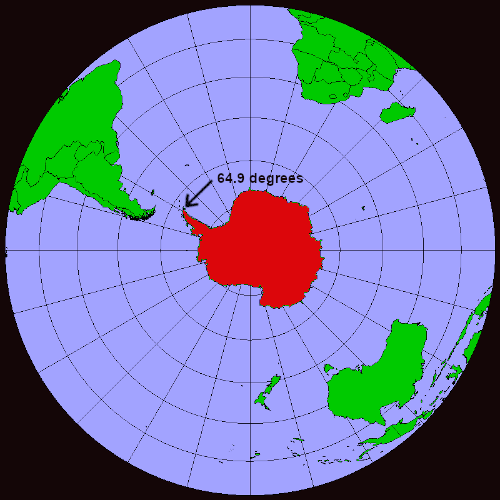
Circle the area on this map

D. Most of Antarctica is a polar desert receiving little annual precipitation, yet it contains more than 70% of the world’s fresh water locked into ancient glaciers that account for 90% of the ice on the planet. Edges of that vast ice sheet have been melting faster as global temperatures rise.
C. While scientists say nearly all of the world’s land masses were once connected, what is now Antarctica’s peninsula was last linked to what is now the southern tip of South America. The tectonic plates that make up the planet surface continually move, tearing continents apart and crashing them together over hundreds of millions of years.
A. When much of the earth’s carbon is circulating in the atmosphere as carbon dioxide, it acts as a blanket trapping the sun’s heat near the planet surface. Over millions of years, rain sweeps carbon dioxide from the air and feeds it to plants and animals which turn into carbon-rich rocks and minerals. When carbon dioxide falls, solar heat is allowed to escape back into space.
B. The last time the atmosphere had a carbon dioxide concentration of more than 400 parts per million, enough ice melted to raise ocean levels as much as 100 feet - higher than most of Florida. It will take a long time for global temperatures to rise enough to melt as much ice. But the last time carbon dioxide levels were this high, human beings did not exist.